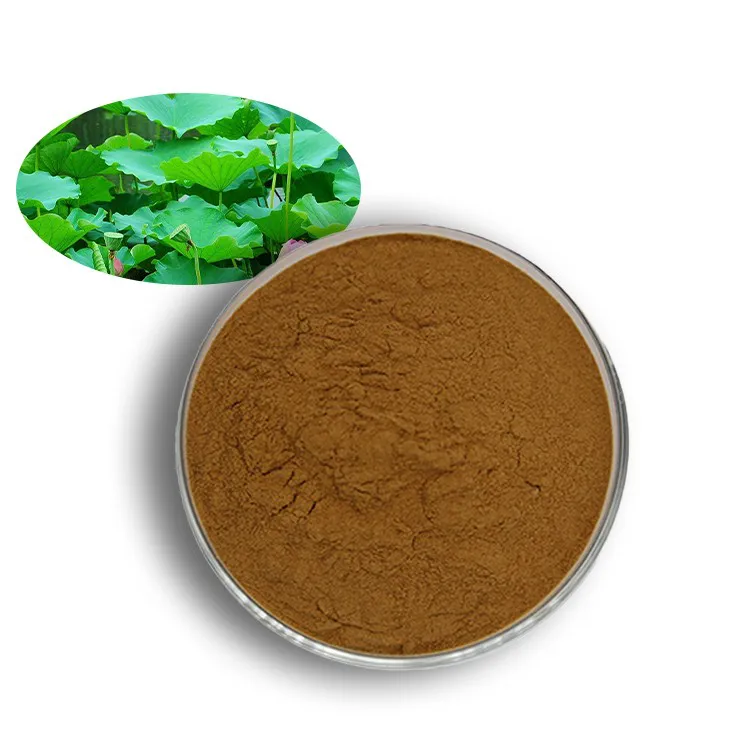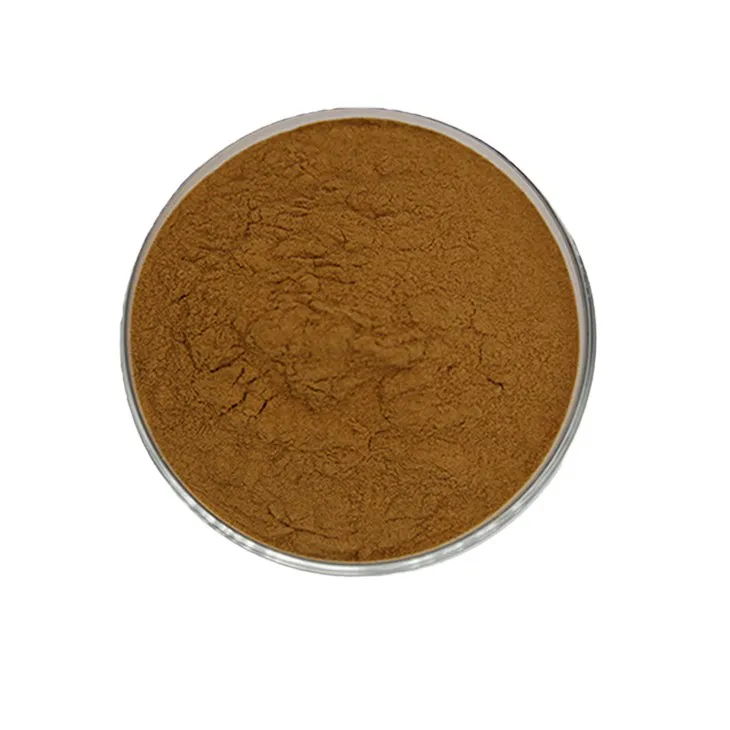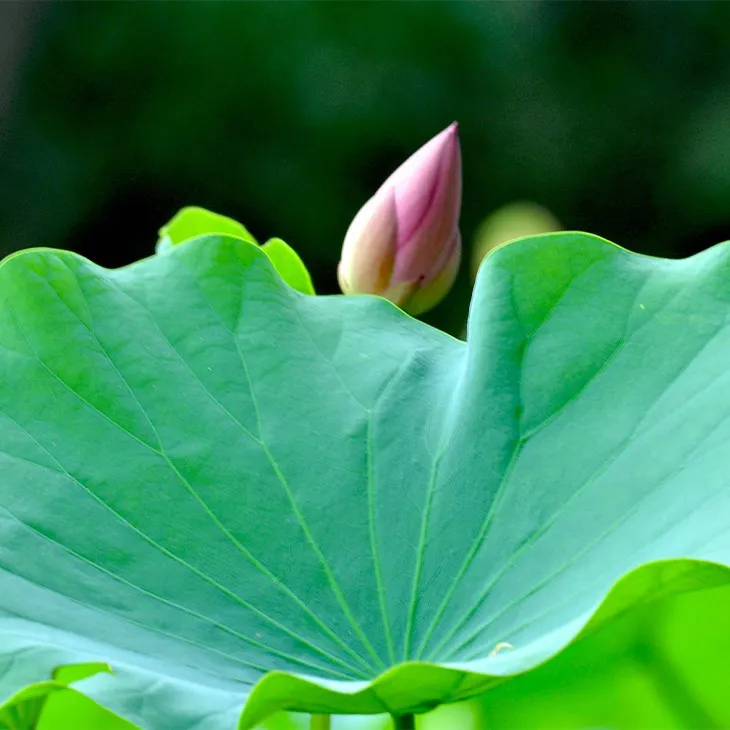- 0086-571-85302990
- sales@greenskybio.com
Lotus Leaf Extract: China vs. the United States.
2024-11-27

1. Introduction
The lotus leaf, a common plant part in Asia, has been used for centuries in China for various purposes. Its extract has attracted attention both in China and in the United States in recent years, but with different approaches and focuses. This article will explore the differences between China and the United States in terms of Lotus leaf extract, including its traditional uses, research directions, production methods, and marketing strategies.

2. Traditional Use in China
China's long - standing use of lotus leaves in traditional medicine is deeply rooted in its cultural and medical heritage. For thousands of years, Chinese traditional medicine has recognized the value of lotus leaves.
2.1 Medicinal Purposes
In traditional Chinese medicine, Lotus leaf extract is often used to treat various ailments. For example, it is believed to have the function of clearing heat and dampness. It has been used to relieve symptoms such as diarrhea caused by damp - heat in the body. Moreover, it is also considered beneficial for reducing body fat and is sometimes included in herbal formulas for weight management.
2.2 Holistic Health Concept
Chinese traditional medicine emphasizes a holistic health concept. Lotus leaf extract is not only used for treating specific diseases but also for maintaining overall well - being. It is seen as a part of a comprehensive approach to health that includes diet, lifestyle, and emotional balance. For instance, drinking lotus leaf tea, which contains lotus leaf extract, is considered a healthy habit in Chinese culture, as it is believed to help regulate the body's internal environment and promote a sense of vitality.

3. Research in China
Chinese research on lotus leaf extract is extensive and multi - faceted, aiming at comprehensively understanding its biological activities.
3.1 Antioxidant Properties
One of the main research areas is the antioxidant properties of lotus leaf extract. Oxidative stress is associated with many diseases and aging processes. Chinese researchers have conducted numerous experiments to demonstrate that lotus leaf extract contains substances that can scavenge free radicals in the body. These free radicals can cause damage to cells and DNA, and the antioxidant components in lotus leaf extract can help prevent such damage. For example, studies have shown that certain flavonoids in lotus leaf extract play a significant role in antioxidant activity.
3.2 Anti - inflammatory Effects
Another important aspect is the anti - inflammatory effects. Inflammation is a common response in the body, but chronic inflammation can lead to various health problems. Chinese research has found that lotus leaf extract can modulate the body's inflammatory response. It may act on inflammatory cytokines and signaling pathways to reduce excessive inflammation. This makes it potentially useful in the treatment of inflammatory diseases such as arthritis.
3.3 Traditional and Modern Research Integration
In China, the production of lotus leaf extract adheres to traditional extraction methods while gradually integrating modern techniques. Traditional extraction methods, such as decoction and maceration, have been used for a long time. However, with the development of modern science and technology, new extraction techniques like supercritical fluid extraction and ultrasonic extraction are also being explored. These modern techniques can improve the extraction efficiency and purity of lotus leaf extract, while still maintaining the traditional medicinal properties.

4. The Situation in the United States
In the United States, the interest in lotus leaf extract is a relatively new phenomenon, and it is viewed from a different perspective compared to China.
4.1 Potential Source of Bioactive Substances
The US views lotus leaf extract more as a potential source of novel bioactive substances. American researchers are interested in exploring the unique chemical components in lotus leaf extract. They believe that these components may have new pharmacological activities that can be developed into drugs or health products. For example, they are looking for substances that can be used in the treatment of complex diseases like heart diseases or cancers.
4.2 Research Focus on Western Medicine - related Fields
The research in the United States is mainly concentrated on the exploration of its chemical composition and the potential application in Western medicine - related fields such as cardiology and oncology. In cardiology, researchers are investigating whether lotus leaf extract can help in reducing blood pressure, improving lipid metabolism, or preventing heart diseases. In oncology, the focus is on whether it has anti - cancer properties, such as inhibiting tumor cell growth or promoting apoptosis of cancer cells.
4.3 Marketing Based on Scientific Claims
In terms of marketing, the US promotes lotus leaf extract - based products with a focus on scientific - based claims. American companies need to provide scientific evidence to support the efficacy of their products. For example, if a product claims to have a certain health benefit, it must be backed by clinical trials or in - vitro studies. This is different from the traditional - based promotion in China, where the long - standing use in traditional medicine and cultural beliefs also play an important role in product promotion.

5. Comparison and Contrast
There are significant differences between China and the United States in the understanding, research, and marketing of lotus leaf extract.
5.1 Research Goals
In China, the research on lotus leaf extract is more focused on its overall biological activities within the framework of traditional medicine concepts, aiming at maintaining health and treating diseases in a holistic way. In the United States, the research is more targeted at finding specific bioactive substances for application in Western medicine - related fields.
5.2 Production and Extraction
China combines traditional and modern extraction methods to preserve the traditional medicinal properties of lotus leaf extract. In the United States, the production may be more influenced by modern pharmaceutical manufacturing standards, with a greater emphasis on purity and consistency of the extract for potential drug development.
5.3 Marketing Approaches
Chinese marketing often emphasizes the traditional use and cultural heritage of lotus leaf extract. In contrast, the US marketing relies heavily on scientific evidence to convince consumers of the product's efficacy.
6. Conclusion
In conclusion, lotus leaf extract has different development paths in China and the United States. China's approach is deeply influenced by its traditional medicine heritage, while the United States is more driven by the search for novel bioactive substances for Western medicine applications. Both countries have their own strengths in the research, production, and marketing of lotus leaf extract, and there may be opportunities for cross - cultural and cross - disciplinary exchanges in the future. For example, Chinese traditional knowledge about lotus leaf extract could inspire new research directions in the US, and American scientific research methods could also provide new ideas for China to further improve the quality and efficacy of lotus leaf extract - based products.
FAQ:
What are the main differences between China and the US in the research of lotus leaf extract?
In China, the research on lotus leaf extract is mainly based on holistic health concepts, aiming at comprehensively understanding its various biological activities for both treating ailments and maintaining overall well - being. In the US, the research is mainly concentrated on exploring its chemical composition and potential application in Western medicine - related fields like cardiology and oncology.
How does China produce lotus leaf extract?
China adheres to traditional extraction methods while gradually integrating modern techniques in the production of lotus leaf extract.
What is the US's approach to marketing lotus leaf extract - based products?
The US promotes lotus leaf extract - based products with a focus on scientific - based claims.
What are the potential applications of lotus leaf extract in China?
In China, lotus leaf extract is used for treating certain ailments and maintaining overall well - being due to its antioxidant, anti - inflammatory and other biological activities.
Why is the US interested in lotus leaf extract?
The US views lotus leaf extract as a potential source of novel bioactive substances, so it is interested in it.
Related literature
- The Bioactivity and Chemical Composition of Lotus Leaf Extract: A Comparative Study between China and the United States"
- "Traditional and Modern Approaches to Lotus Leaf Extract Research in China"
- "Lotus Leaf Extract in US Biomedical Research: Current Status and Future Prospects"
- ▶ Hesperidin
- ▶ Citrus Bioflavonoids
- ▶ Plant Extract
- ▶ lycopene
- ▶ Diosmin
- ▶ Grape seed extract
- ▶ Sea buckthorn Juice Powder
- ▶ Fruit Juice Powder
- ▶ Hops Extract
- ▶ Artichoke Extract
- ▶ Mushroom extract
- ▶ Astaxanthin
- ▶ Green Tea Extract
- ▶ Curcumin
- ▶ Horse Chestnut Extract
- ▶ Other Product
- ▶ Boswellia Serrata Extract
- ▶ Resveratrol
- ▶ Marigold Extract
- ▶ Grape Leaf Extract
- ▶ New Product
- ▶ Aminolevulinic acid
- ▶ Cranberry Extract
- ▶ Red Yeast Rice
- ▶ Red Wine Extract
-
Quercetin
2024-11-27
-
Cassia Seed Extract
2024-11-27
-
Aminolevulinic acid
2024-11-27
-
Stevia Extract
2024-11-27
-
Aguaje Extract
2024-11-27
-
Europen Bilberry Extract
2024-11-27
-
Boswellia Serrata Extract
2024-11-27
-
Fenugreek Extract Powder
2024-11-27
-
Green coffee bean Extract
2024-11-27
-
Hops Extract
2024-11-27





















